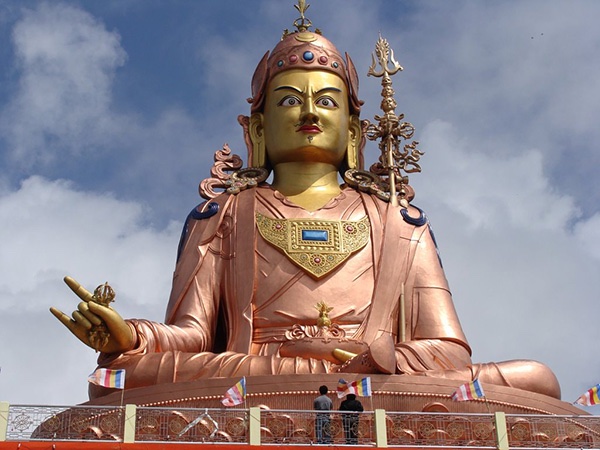Buddha

"Do not dwell in the past, do not dream the future, concentrate the mind on the present moment"
Buddha
Gautama Buddha also known as Siddhārtha Gautama , Śhakyamuni Buddha or simply the Buddha, after the title of Buddha, was an ascetic (śramaṇa) and sage, on whose teachings Buddhism was founded. He is believed to have lived and taught mostly in the eastern part of ancient India sometime between the sixth and fourth centuries BCE.
Gautama taught a Middle Way between sensual indulgence and the severe asceticism found in the śramaṇa movement common in his region. He later taught throughout other regions of eastern India such as Magadha and Kosala.
Gautama is the primary figure in Buddhism. He is recognized by Buddhists as an enlightened teacher who attained full Buddhahood, and shared his insights to help sentient beings end rebirth and suffering. Accounts of his life, discourses, and monastic rules are believed by Buddhists to have been summarized after his death and memorized by his followers. Various collections of teachings attributed to him were passed down by oral tradition and first committed to writing about 400 years later.
A Buddha is a type of Avatar but in the case of a Buddha the process of manifestation and appearance on Earth is somewhat different than for the majority of Avatars.
The Master K.H. and the Master M. have written that Gautama Buddha was the greatest and holiest man that ever lived and describe him as having attained to “the highest form of adeptship man can hope for on our planet.”
Buddha the Title
Buddha (Sanskrit) refers to one who has achieved enlightenment and Buddhahood, and has fully comprehended the Four Noble Truths. Contemporary, the term refers to Siddharta Gautama, the teacher and founder of Buddhism, who is simply known as "the Buddha". The term also refers to others who have achieved enlightenment and Buddhahood, such as the 27 Buddhas who preceded Gautama, Amitābha and the future Buddha, Maitreya.
What is Buddhahood?
In Buddhism, buddhahood (Sanskrit) is the condition or rank of a buddha (Sanskrit for "awakened one"). Buddhahood is the state of an enlightened being, who having found the path of cessation of suffering, is in the state of "No-More-Learning". The Buddhists consider Buddhahood to be a universal and innate property of absolute wisdom. This wisdom is revealed in a person's current lifetime through Buddhist practice, without any specific relinquishment of pleasures or "earthly desires".
Lord Padmasambhava

Buddhists do not consider Siddhartha Gautama to have been the only Buddha. Buddha Padmasambhava (Lotus-Born), also known as Guru Rinpoche, was an 8th-century Indian Buddhist master.
A number of legends have grown around Padmasambhava's life and deeds, and he is widely venerated as a 'second Buddha' across Tibet, Nepal, Bhutan, and the Himalayan states of India.
According to tradition, Padmasambhava was incarnated as an eight-year-old child appearing in a lotus blossom floating in Lake Dhanakosha, in the kingdom of Oddiyana.
Master Choa Kok Sui conveyed His Belief that His Great Spiritual Teacher Lord Mahaguruji Mei Ling is the same Soul as that of Lord Padmasambhava.
Lord Padmasambava is a historic Guru and is sometimes called the Second Buddha. He is considered to be the Founder of Tibetan Tantric Buddhism, was known to be a Great Master of Energy, is the Great Teacher of Teachers. Lord Padmasambhava did Healing using various Methods and is a Highly Adept Spiritual Practitioner.
MCKS also stated that Lord Padmasambhava was the Great Indian Avatar Lord Rama in a previous Incarnation.
The spiritual practitioner is called a BUddha when he/she is at the Eighth Initiation level of the spiritual path.
